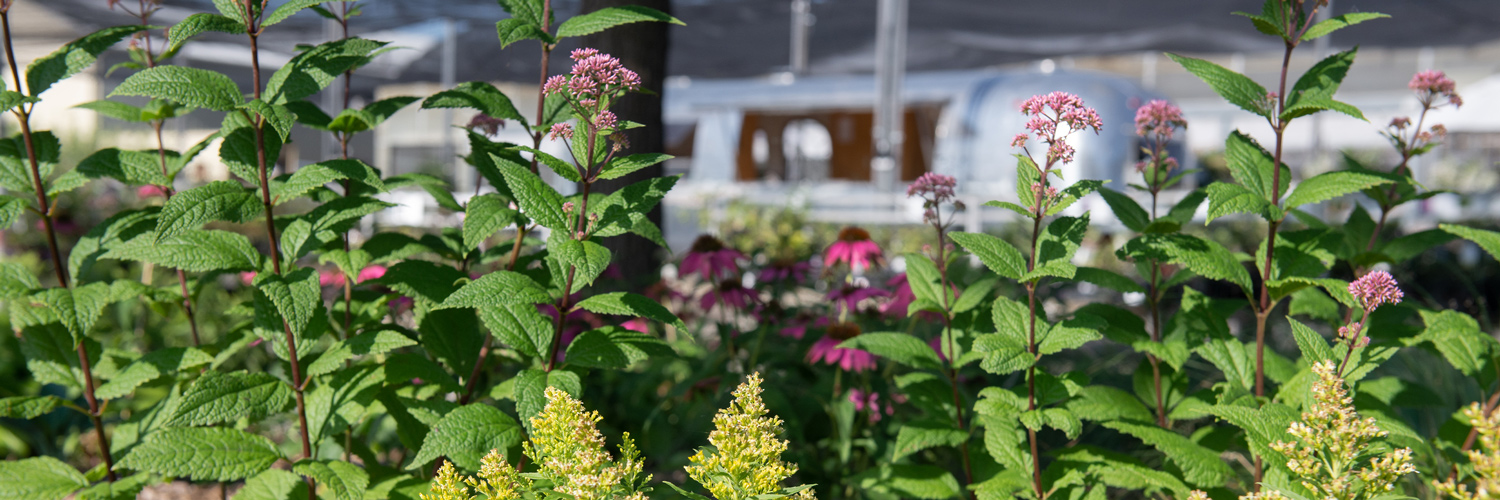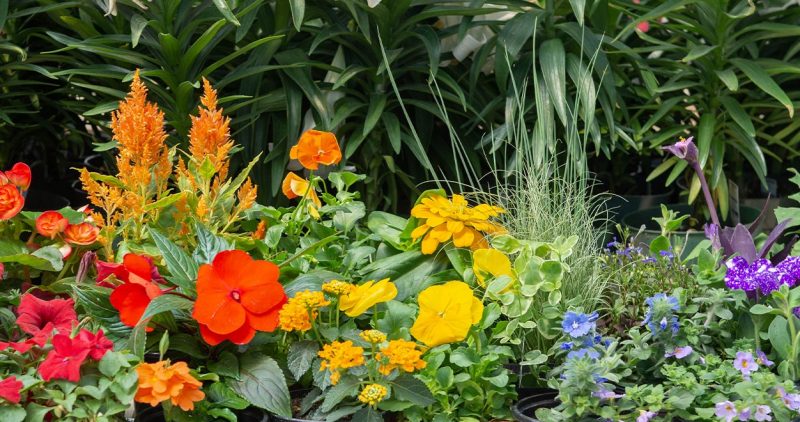
As you begin thinking about spring plans for your outdoor space, you might be looking for ways to make your garden or landscape more earth-friendly this year. One of your goals might be to reduce your use of synthetic fertilizers and pesticides. Or maybe you want to help support the health of our natural waterways and wildlife communities. These are the thoughts of a sustainable gardener, and if you share some of these same goals, here we have a few steps you can take as you begin your journey.

1. Choose Native
One of the most effective steps toward creating a sustainable space around your home is to choose native plants that thrive in and support our natural community of plants and wildlife. Native plants have evolved with the local climate and wildlife – and can hold their own against just about any type of weather or pest their surroundings can throw at them. So once established, they require little to no input from you in the way of additional water, pesticides, or fertilizers. Native plants also contribute to their natural community in meaningful ways by providing specific resources that native pollinators, birds, and other wildlife look for to survive and reproduce.
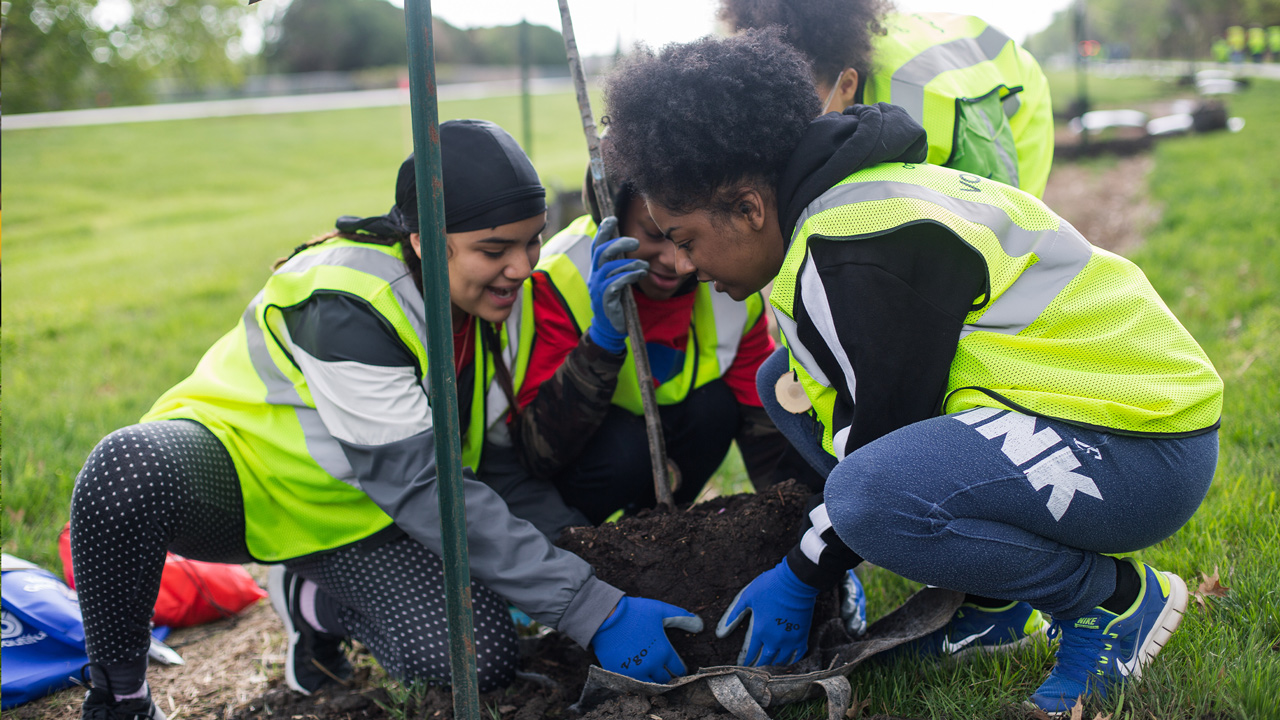
2. Plant a Tree
The benefits of trees are numerous. In addition to shading us from the hot sun, trees also cool the air around themselves in a process called transpiration – using heat energy to convert the water in their leaves to water vapor. So, a well-placed shade tree can significantly reduce the energy you use to cool your home in the summer. And evergreen trees can block cold winds that increase the amount of energy it takes to heat your home in the winter. Trees also improve air quality, mitigate excess storm runoff, and – particularly true of native trees – support local birds, insects and other wildlife too.
Photo by Keep Omaha Beautiful
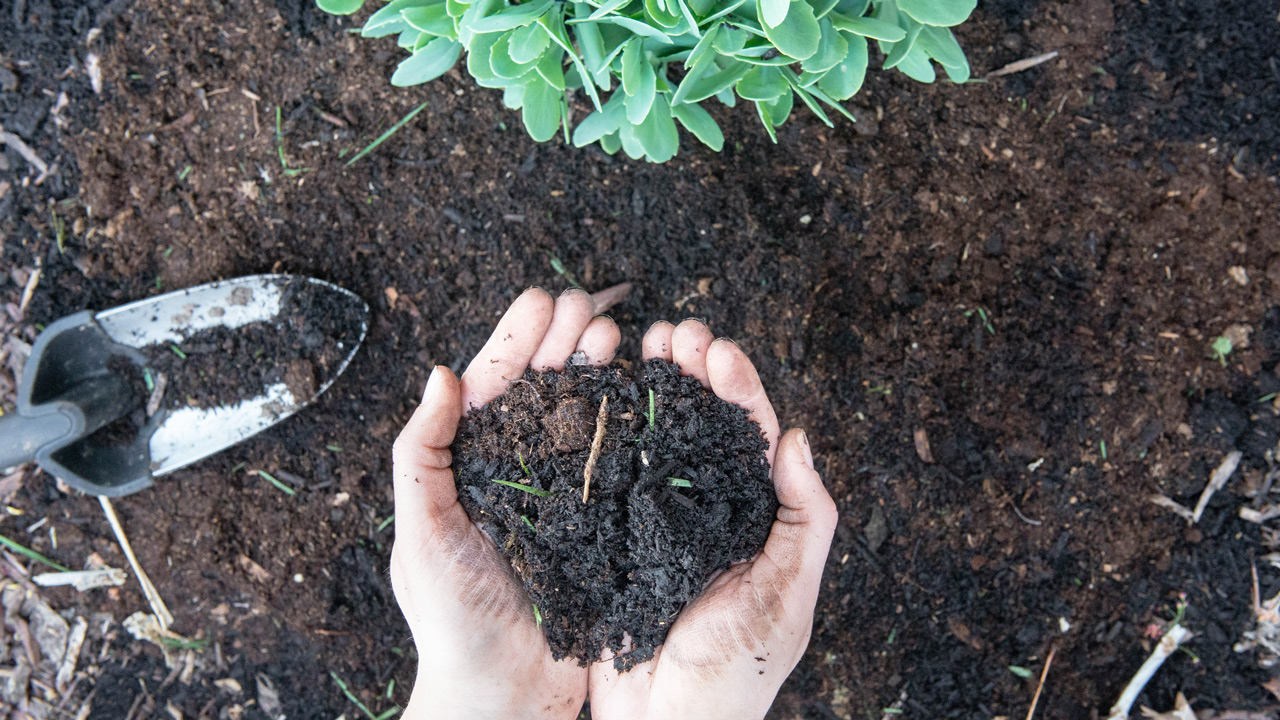
3. Spread Compost for Healthy Soil
Building a more sustainable landscape is as much about what’s going on under the soil surface as above. Healthy soil teems with beneficial microorganisms, worms, insects, and other creatures in a complex partnership that works to provide plants with the nutrients and root environment they need to thrive – with fewer inputs of synthetic fertilizers and pesticides. Late winter is a great time to apply a layer of compost to your garden beds and landscapes. As it breaks down naturally into the soil, the compost nourishes the beneficial soil bacteria and other organisms so they can support your healthy and sustainable garden during the growing season.
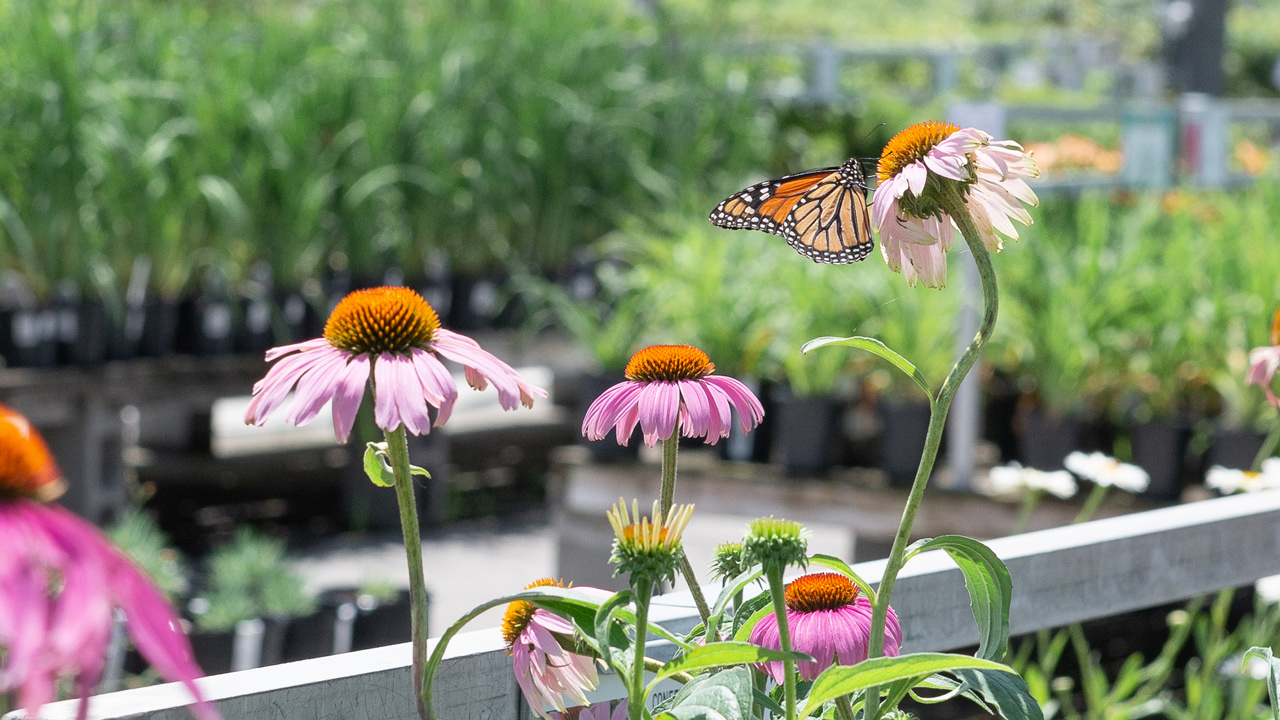
4. Make Friends with Insects
One goal for a sustainable landscape should be to mimic natural ecosystems, and that includes supporting healthy relationships between plants and the insects that visit them. A great place to start is to create a pollinator-friendly habitat with a variety of native flowers. Not only will you attract beautiful butterflies, but you’ll support lots of beneficial insects that will help keep pests like caterpillars, aphids, and white fly in check – without the use of harmful pesticides.
And if something more is still needed, consider other earth-friendly options to control insect pests. You might use a sturdy spray of water to discourage small bugs like aphids and white fly. Or larger pests like Japanese beetles can be hand-picked and dropped into a bucket of soapy water.
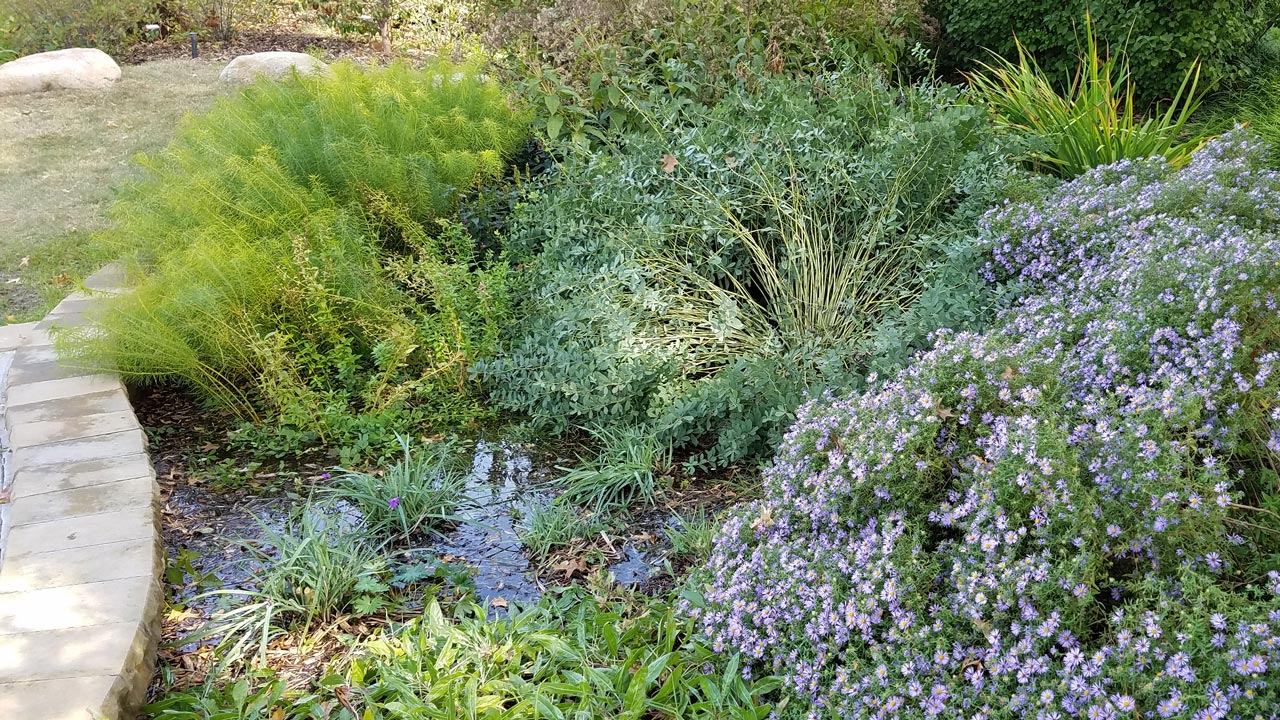
5. Shrink Your Lawn
A lush expanse of green grass can be nice, but if your goal is to reduce the chemical inputs and water use in your landscape, then a grass lawn works against you. As you plan your outdoor projects this year, consider replacing the most challenging and labor-intensive portions of your lawn with other alternatives, such as an earth-friendlier bed of native perennials and shrubs. A rain garden is just one example of how a strategic planting of native species can benefit both your landscape and the surrounding community – and reduce the amount of time and fuel you spend mowing too. And for those portions of lawn you choose to keep, consider using more earth-friendly lawn care too.
Photo by David Shelton of University of Nebraska Extension
One Step at a Time
It’s not necessary to adopt all of these ideas in one season – any of the steps on this list make a big difference and will move you closer to your goal of creating a sustainable, earth-friendly environment around your home. And if you have questions, we’re here to help. Just drop by the Greenhouse and talk with the team. Spring is on its way, and we’re excited to help you get ready for a new, more sustainable, growing season.

